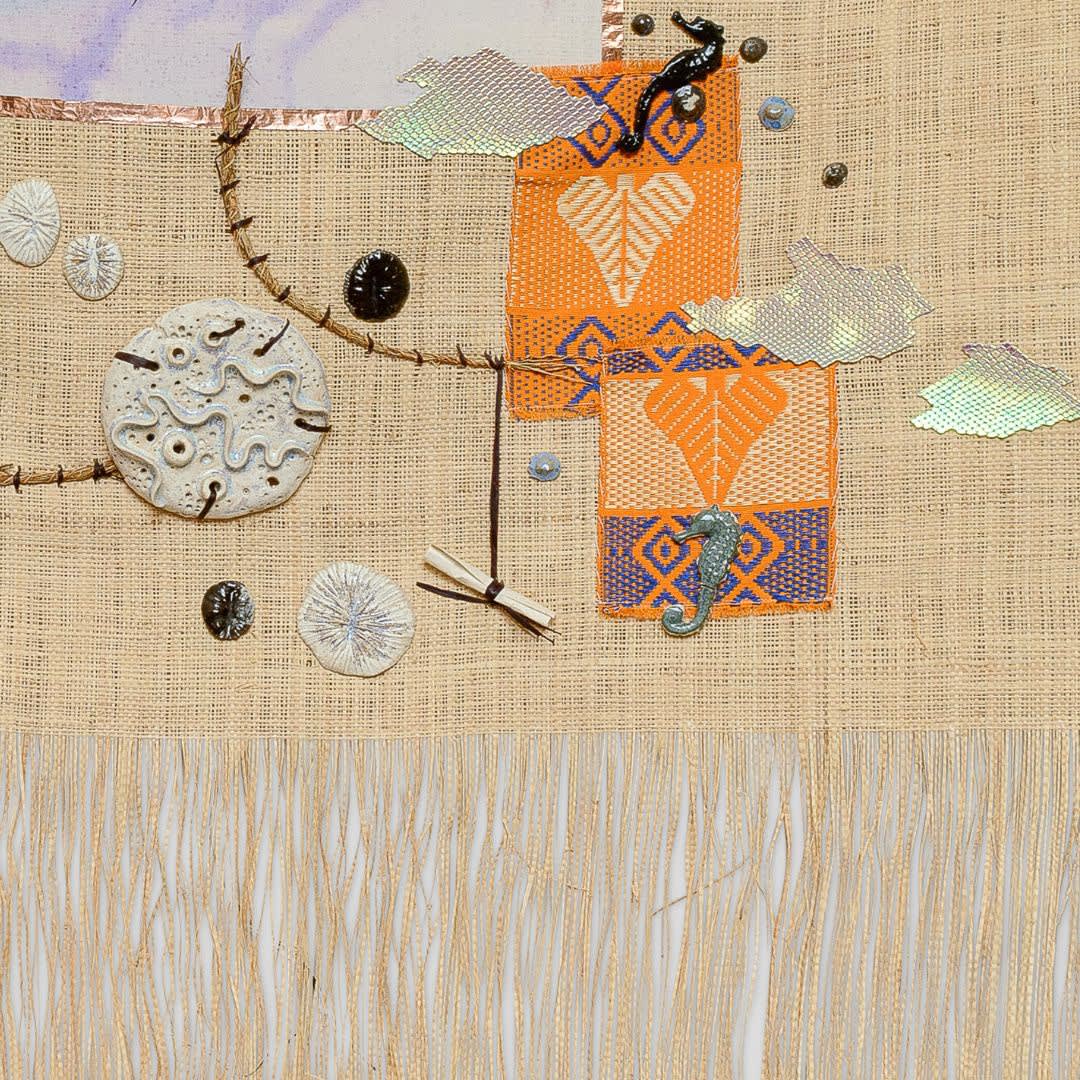The works of Marie-Claire Messouma Manlanbien are like biographies, in images, of human relationships: the artist observes them, she transforms them into signs. These narratives, from the matrix - notably this series of pieces, which she has been making for a few years now, which are like apparitions of life in the fold of paper, from an orifice or an original nucleus - have extended to the representation of prolific universes, notably in the larger, more recent pieces. There have always been larger pieces, but the diversity, the richness, of the environment that populates them has increased.
The artist's relational diagrams are always embodied from a textile base, or, when it comes to paper, it must have a fabric-like flavor: there is tissue paper, canvas, raffia, which can serve as a base for this humanity. And the recurrent use of a specific textile, the Ivorian kita. Marie-Claire Messouma Manlabien works it like a sculptor: she removes and adds, she modifies the course of the weaver's patterns. This textile quality, omnipresent, makes certain pieces seem close to clothing; they are ready to become dresses.
Marie-Claire Messouma Manlanbien says that she observes the relationships between human beings, - with attention and a kind of hindsight perhaps - and the consequences of these relationships: blockage, stress, anxiety sometimes. It is for these clashes, or these silences between individuals, living or dead, that she develops a plastic grammar. Between two heads she models, - it is each time a new sculptural invention, it is sometimes hair, an embroidery, a cut sponge - a knot: and here is a cosmogonic blockage if not resolved, symbolized. (She prefers to call "heads" the small masks inspired by the Akan cult that she creates in plaster or resin and that populate her works, so as not to divert attention).
The artist is not interested in the relations between human beings in a reduced sense: she extends this look to the living, to the relations between the human, animal, vegetable kingdoms and the elements. There is the hum of a series of infinite clashes and what these concussions draw of inexorable today for the living. In his work, all the forms of life are put at the same level, they merge, the most essential organs merge in the vegetable, the species are interdependent, necessary for their mutual survival.
Water and the human figure have gained the most recent works. Ever more cosmic expanses: it is simply a matter of talking about life. Glistening leather scales, a "mermaid leather" says the artist, evoke Mami Wata, all waters, the threats that weigh on them, and the liquid of a maternal womb. Whole beings, doubled, evoke the crossed crocodiles (or crossed caimans) of the Akan imagery. Marie-Claire Messouma Manlabien explains that these human figures, since her work is read and received in different geographies, prevent the discourse from getting lost on the side of "tradition" (which could happen with masks or crocodiles), something that does not make much sense for her who tries to speak with forms in all the languages that are hers.
The sensation of witnessing the birth, the organization or the reconfiguration of a world, in front of her pieces, is also linked to the multiplicity of materials involved - stone, glazed ceramics, tree resins with amber tones ("vegetable blood" according to the artist), embroidery (notably from hair and pubic hair), The artist's work is characterized by the multiplicity of motifs - heads, but also bees ("because they work together to maintain their ecosystem"), seahorses ("because it is an incarnation of the sharing of procreation"), nipples or corals. The technical and plastic invention is always marvelously in phase with the power of the motif: thus of these large human figures that we mentioned, drawings in black on white printed in negative on canvas and to which the transformation in white on black gives a galactic character.
Marie-Claire Messouma Manlanbien repeats it: each one has an aura. And working together is an obligation.
Eva Barois De Caevel

